A research group led by the National Agriculture and Food Research Organization (NARO) released a revised edition of 'A manual for the management of loquat psyllid Cacopsylla biwa' online. It is a comprehensive technical manual introducing an effective pest control system against the new pest, loquat psyllids, which cause severe damage to loquat production. In the updated pest control calendar optimized for loquat psyllids (standard annual control schedule), the use of three types of new agricultural chemicals that were newly registered or allowed its usage against loquat psyllids since the release of the first edition in March 2020 was included. The core technique in the new pest control system is the application of the agricultural chemicals three times per year in Autumn (early flowering stage), Spring (before bagging), and Summer (after harvesting) to achieve the most effective result. The manual is expected to contribute to production and pest control guidance and support farmers to establish a sustainable loquat production system.
Overview
In 2012, loquat psyllids (Cacopsylla biwa), a new species of a pest for loquat trees was observed for the first time in Japan. However, due to the lack of knowledge of this new species, the countermeasure taken at the time was not effective enough to stop the outbreak and resulted in severe damage to the loquat production.
As a response, NARO had started a research project to prevent further distribution of the pest and to establish an effective pest control method. In cooperation with research institutes, training organizations, producers' organizations, and universities in the prefectures with affected areas, NARO had been engaged in researches to elucidate its biology and life cycles, conducted monitoring projects, and established technologies to identify and control loquat psyllids. The accomplishments were organized and released as the first edition of 'A manual for the management of loquat psyllid Cacopsylla biwa' in March 2020.
Since then, three agricultural chemicals were registered or allowed its usage against loquat psyllids under the Agricultural Chemical Regulation Law, which realized the use of agricultural chemicals in all of the proper timings to achieve the best result, and the manual was updated as the revised edition. The establishment of a stable loquat production system is possible even in the affected area by following the instructions in the manual. This manual (in PDF file) can be downloaded free of charge from the NARO website:
https://www.naro.affrc.go.jp/publicity_report/publication/pamphlet/tech-pamph/134358.html
For Inquiries
Contact: http://www.naro.affrc.go.jp/english/inquiry/index.html
Publications
Inoue, H., Nakanishi, T. and Kaneda, T.(2014) Cacopsylla biwa sp. nov. (Hemiptera: Psyllidae): a new pest of loquat Eriobotrya japonica (Rosaceae) in Japan. Applied Entomology and Zoology, 49: 11‒18.https://doi.org/10.1007/s13355-013-0217-z
Reference Information
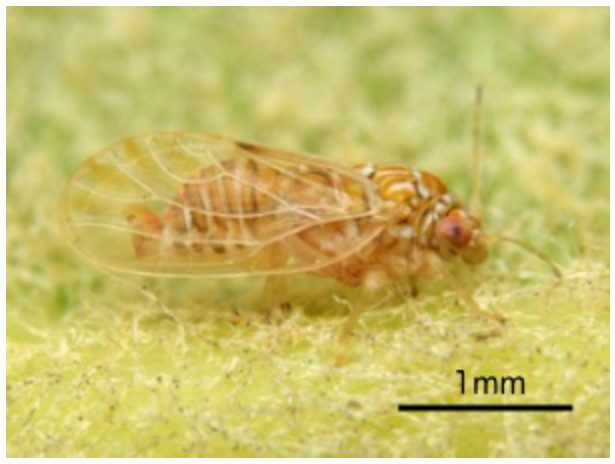
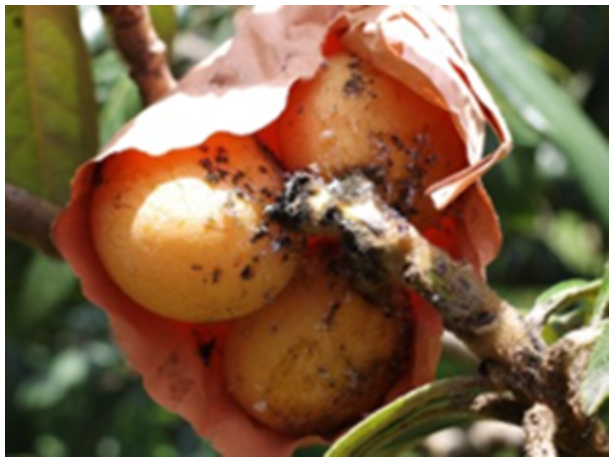
Table.1 Active ingredients contained in the registered agricultural chemicals for loquat psyllids under the Agricultural Chemical Regulation Law in Japan (as of Aug. 2020).
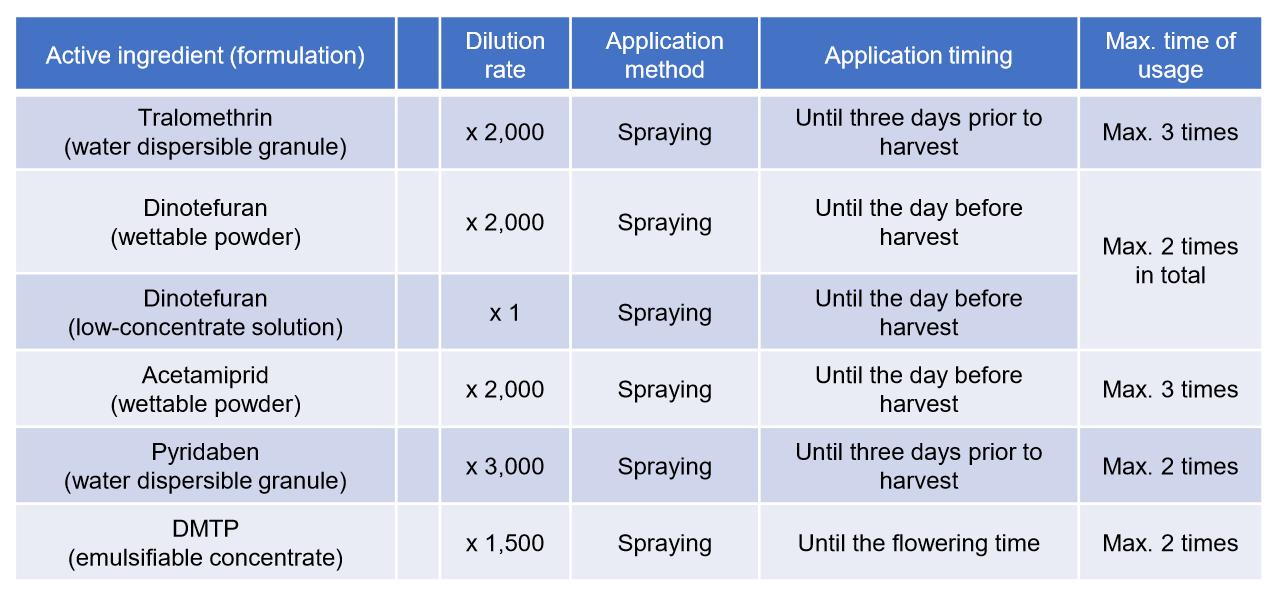
Table.2 Key points for establishing a pest control system against loquat psyllids.
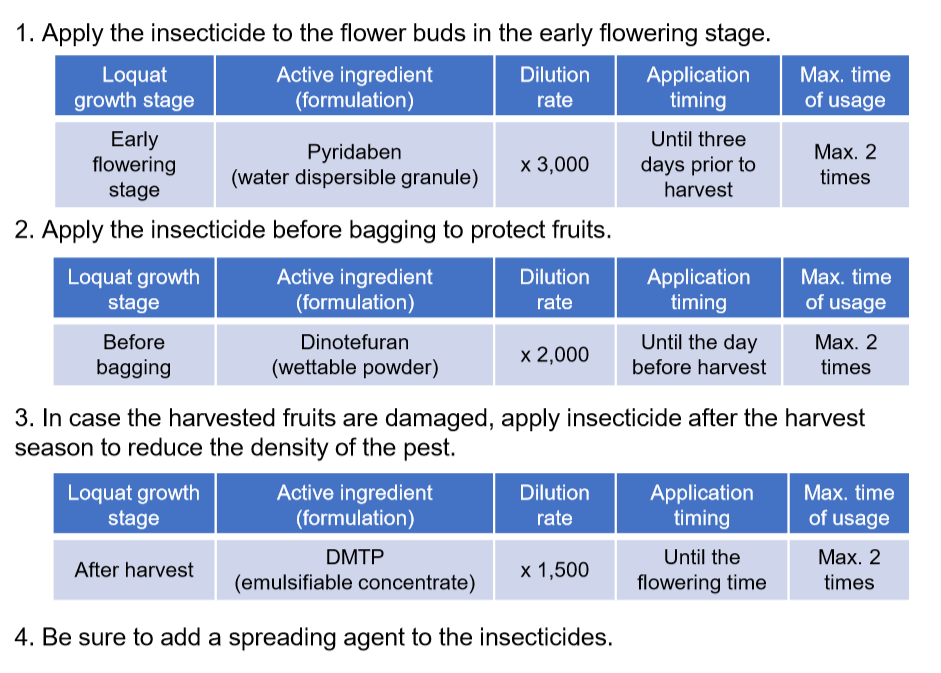
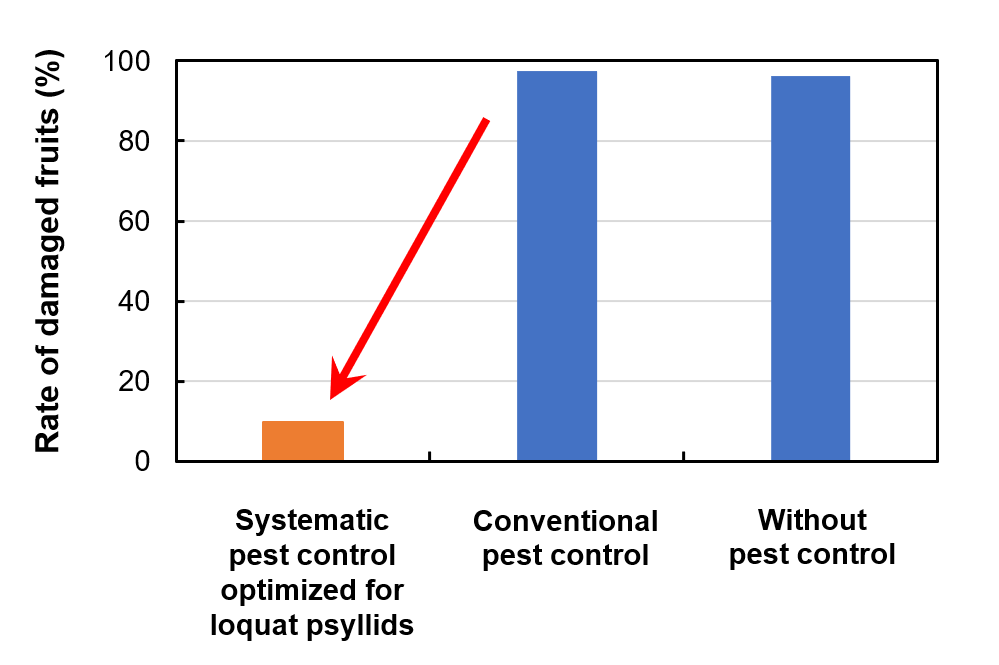
Fig.1 Comparing the rate of damaged fruits under different conditions.
The result of a demonstration experiment in the highly affected area. The rate of damaged fruits was restricted to 9.8% in the area under the systematic pest control based on the manual. On the other hand, more than 96% of the fruit was damaged in the area with conventional pest control (not compatible with loquat psyllids) and the area without pest control.




